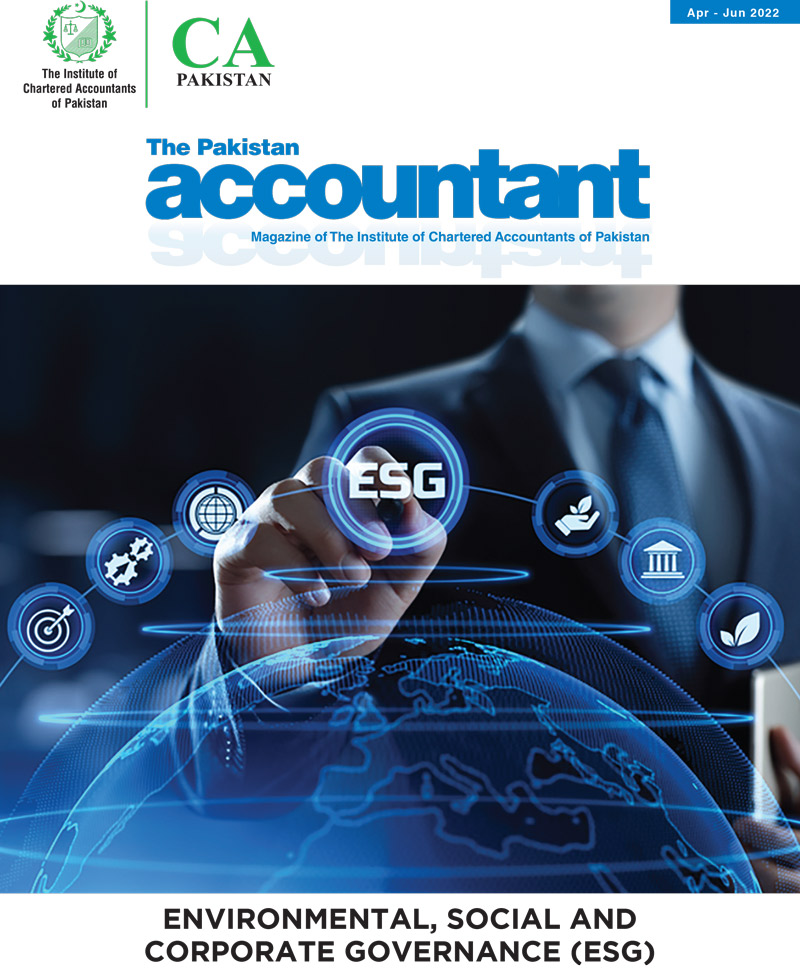Environmental, Social and Corporate Governance Management
Environmental, Social and Corporate Governance or ESG is a program, an approach or rather a conduct to gauge the extent to which the organization works on social, environmental and governance motto besides its ultimate objective of profit maximization for its shareholders. ESG program is now more of a obligation or necessity that has become integral part of any industry to build a sustainable business. ESG represents a more stakeholder oriented approach rather than shareholder centric approach for undertaking business.
The term ESG was originally derived in early 2005 in a revolutionary study entitled ‘Who Cares Wins’ conference that brought all the institutional investors, regulators and research analysts across the globe to scrutinize the impact of ESG drivers on the company’s performance. In less than a period of 2 decades, the ESG program turned in to global marvel representing more than US$30 trillion invested in ESG oriented activities as per Global Sustainable Investment Review 2018.
ESG program has now become implicit or rather entrenched in the organization’s corporate goals and vision making it more practical as a responsibility for their sustainability rather than serving these activities on humanitarian ground. Ezekiel Ward, founder of North Star Compliance Limited has precisely delineated the significant of ESG program for the investors as follows:
‘For Investors, ESG is broadly a checklist to say yes, you know the companies in our portfolio have these factors, and that should lead to better return’.
The ESG approach these days is being presumed as one of the foremost criteria used by the institutional investors and sponsors to screen out the prospects of making a long-term investment in any organization. Henceforth, organizations are now moving ahead towards integrating the ESG approach in their business strategies that will empower the organization to continue their operational activities in long-run and provide outlook for business growth, increase productivity, ease of raising funds, build-up reputation and retain talent.
The ESG program consists of three pillars:
- E refers to the changes the organization brings in the environment/ climate due to the waste or toxic chemical emission from its production/ manufacturing activities which may affect the life of human creature.
- S refers to the societal response of the organization and the level of affiliation the institution stand-in with its internal as well as external stakeholders. It also includes the health and safety arrangement made available with the prospects of equal growth, gender diversity and opportunities to develop & retain talent. Social pillar also embraces consumer protection, data security and human rights.
- G refers to the extent of transparency embraced within the corporate culture of the organization, Board diversity, business morals, management structure and tax transparency.
For a successful business model, the organization has to embed ESG drivers systematically within the organizations culture duly linked with their prospective business strategies. For this drive, a direct linkage between ESG drivers and business strategies needs to be established to translate these factors ultimately in profit maximization. The links may vary depending on the business models, organization geographical location, sector etc.
‘When it comes to ESG, corporates are looking at this through the lens of business opportunities; new markets that they can open up and sell to, cost reduction and also integrated risk management’. [Ezekiel Ward, founder of North Star Compliance
Limited]
The companies with strong motto to deliver quality product without compromising the environmental health are more inclined to progression in their concerned business activities. As per the McKinsey research, people tend to invest and pay more to ‘go green’. When Unilever presented a detergent powder under the brand ‘Sunlight’ which uses less water as compared to other brands, the sale of these water saving products boosted noticeably. Next, with the application of ESG program, organization can substantially cut the cost for the final consumer.
The best example is cars with hybrid engines that do not use fuel to function. Thirdly, ESG model also eases regulatory burden with less risk of antagonistic government actions. Supplementary, ESG model also assist in retaining talented human resources with increased productivity and efficiency which have ultimate impact
on the company’s reputation besides its earnings. The companies that give back to its employees will in response augments the level of employees’ enthusiasm, commitment and motivation.
At time the organization may reach to a point where it has to outweighs the interest of stakeholders above the shareholders in order to remain steady within the ESG regime to ensure sustainability. ESG model needs to be derived in the manner that
shall harmoniously accentuate on all the three pillars of the model.
The pandemic COVID-19, which has affected the entire globe systemically bringing an outrageous disturbance in every one’s life. A life which has never been envisaged before or life which no one even now bothers to re-think. During this tenor of disaster, the government of different countries across the globe has played their decisive role by formulating strategies in the light of ESG models, since government is equally responsible to follow ESG model.
Governments are looking at driving change through policy, and that’s driven by electoral forces, that driven by some hard realities on security and infrastructure. So governments again have quite a different policy-driven perspective. [Ezekiel Ward, founder of North Star Compliance Limited]
If we glance at the remedial measures that were adopted in response to COVID by State Bank of Pakistan which includes compulsion of social disturbance, wearing of masks, introduction of Temporary Export Refinance Facilities at minimal rates, reduction in working hours, lock downs etc. which enabled the country to sustain.
Henceforth, the same is in the case of every other country’s where their respective
government has taken immense steps to achieve sustainability through instigating ESG model.
The performance of the company investing and following ESG model relies on independent ratings that helps to identify the behavior of the organization towards environmental routine, social influence and governance correlated matters. Bloomberg, MSCI ESG Indices, Dow Jones Sustainability Index, Refinitiv ESG Score and GRESB Benchmark are few third-party indices which ranked ESG performance of different companies across the globe.
As per MSCI, following are the top 10 MSCI ESG rated companies that have reported almost double-digit growth and income over the past three years.
| Rank | Name of Company | Industry | ESG Rating | ESG Actions |
|---|---|---|---|---|
| 1 | Nvidia | Semiconductors | AAA | Continued paying vendors/ contractors even in times of COVID |
| Tripled number of black employees | ||||
| 2 | Microsoft | Software/ Infrastructure | AAA | Leadership in energy efficiency |
| Working towards 100% renewable energy by 2025 | ||||
| By 2050, company plan to offset all the carbon emissions | ||||
| 3 | Best Buy | Specialty Retail | AAA | Achieved 100% waste diversion |
| Committed USD 10 million towards building teen tech center in Los Angeles | ||||
| 4 | Adobe | Software/ Infrastructure | AAA | Achieved global gender pay parity |
| Invested USD 87 million to benefit underrepresented minorities. | ||||
| Plan to obtain all powers from renewable sources by 2035. | ||||
| 5 | Pool | Leisure | AA | Made donations to human rights organizations |
| Donated thousands of trees through National Forest Foundation | ||||
| 6 | Salesforce | Software Application | AA | Achieved net zero carbon emissions |
| 100% renewable energy for its operations | ||||
| Established a racial equality and justice task force | ||||
| 7 | Cadence | Software Application | AA | Established a supplier code of conduct to extend its governance standards |
| Targeting 15% reduction in carbon emission by 2025 | ||||
| Achieved global gender pay equity | ||||
| 8 | Intuit | Software Application | AA | Recognized as one of the best large technology employers |
| Close to achieve gender pay equity | ||||
| 9 | Idexx Laboratories | Diagnostics & Research | AA | Developed a global whistleblower policy to support compliance with company’s code of conduct |
| Reduced energy consumption per sq. foot by 15% | ||||
| 10 | Lam Research | Semiconductor equipment | AA | Implementing sustainable measures throughout its organization to achieve 100% renewable energy by 2030 |
| Net zero emission by 2050 |
Nevertheless, Pakistan is also ahead in this emerging market where the country has planned to raise environmental bonds entitled as ‘Green Bonds’ by raising funds amounting to Rs. 1 billion which will be used for improving environmental related concerns such as developing clean water and cleaning up the rural landscape.
The State Bank of Pakistan has also played a decisive role in promoting the ESG program by taking numerous actions which includes promoting green banking by using aboriginal energy particularly renewable energy. For the said initiative,
SBP introduced different financing facilities to promote energy projects of up to 50MW capacity using solar, bio-mass and hydro resources. Besides, SBP has also
issued Green Banking Guidelines in 2017 in which it encouraged the Banks to promote green funding portfolio and lessen emanation of carbon through espousing paper less activities & services and branches using renewable
energy.
The term ESG was originally derived in early 2005 in a revolutionary study entitled ‘Who Cares Wins’ conference that brought all the institutional investors, regulators and research analysts across the globe to scrutinize the impact of ESG drivers on the company’s performance. In less than a period of 2 decades, the ESG program turned in to global marvel representing more than US$30 trillion invested in ESG oriented activities as per Global Sustainable Investment Review 2018.
The SECP’s Listed Companies Regulations 2019 has also entrusted the Board of Directors of the companies to ensure implementation of environmental, social and governance practices and report on measures taken by the companies in this regard. Earlier in 2009, the SECP also issued a Corporate Social Responsibility Order to be complied by all the listed companies followed by Corporate Social Responsibility Voluntary Guidelines 2013 which requires companies to integrate sustainability in the organization.
Despite that ESG is at its impetus across the globe, there are certain dilemma and challenges being faced by the organizations in successfully implementing the model. Lack of reliable metric tool to track ESG performance, dearth of communicating ESG initiatives to achieve competitive lead, inadequate ESG data/ data irregularities, weak interconnection dimension of ESG, lack of basis to bifurcate
case of company’s growth due to ESG driven factors or other factors, attitude and mindset of all the investors towards ESG factors are certain impediments that come
across while implementing ESG model.
The companies with strong motto to deliver quality product without compromising the environmental health are more inclined to progression
in their concerned business activities. As per the McKinsey research, people tend to invest and pay more to ‘go green’.
Besides, there is still ground to improve reporting standards and disclosure on ESG programs in line with the global standards, formulate stringent SOPs that needs to be meticulously complied and above all recognize the significance of ESG program since it is still an emerging area to ensure that sound measures are being adopted and disclosed accordingly. There is a need to embed the ESG program within the organization’s vision and strategy to promote the said culture to next level with a motive to build a sustainable future for now and coming generations.














